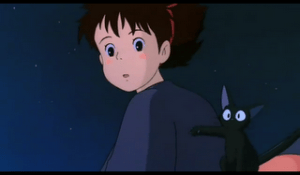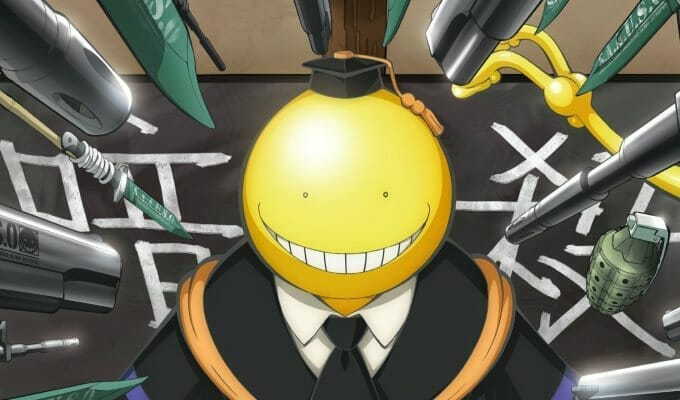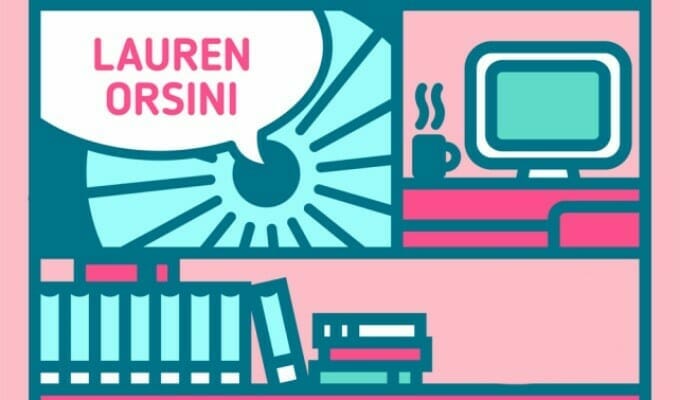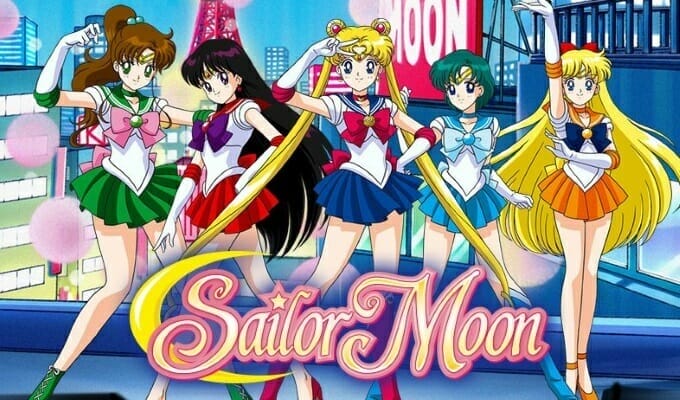As I make final preparations for tomorrow’s entry, please enjoy this piece by my close friend and long-time colleague, Matt Brown. Matt is the Editor-in-Chief of Anime Dream, and an all-round fine fellow.
 Of all the stereotypes of the American anime fan, probably the most pervasive is the notion that we are all, like the Trekkies before us, socially inept and withdrawn. Mother may not have a basement, but there we live, all the same. Why else would we choose an activity that so few others in our communities are aware of, let alone engage in? Anime is viewed in personal basement theaters, maximum capacity: 1, with no immediate outlet for whatever thoughts may surface. Anime fans think it’s socially acceptable to ask young girls for hugs in view of Washington Post reporters. At least the rest of us can be thankful that none of them went on record with, “in that outfit, she’s practically begging for it.”
Of all the stereotypes of the American anime fan, probably the most pervasive is the notion that we are all, like the Trekkies before us, socially inept and withdrawn. Mother may not have a basement, but there we live, all the same. Why else would we choose an activity that so few others in our communities are aware of, let alone engage in? Anime is viewed in personal basement theaters, maximum capacity: 1, with no immediate outlet for whatever thoughts may surface. Anime fans think it’s socially acceptable to ask young girls for hugs in view of Washington Post reporters. At least the rest of us can be thankful that none of them went on record with, “in that outfit, she’s practically begging for it.”
Like most cultural stereotypes, I don’t know how this one came about, or if it’s entirely wrong. My introduction to anime was decidedly social, though: one of my college friends, whom I consider extremely outgoing and who at the time was already engaged to be married, tried to get myself and several others to watch Dragonball Z when we weren’t busy (which, a fact that college students would never admit, is quite a lot of the time). Frankly, it was like trying to get a Republican senator to speak at a pro-amnesty rally. The only reason I became interested in anime at all was Jacon, which, as a favor to him, I ran the old-timer’s video room. The content consisted almost entirely of ADV Fansubs VHS tapes. This time, anime had me at episode 5 — the first title we showed that day was City Hunter.
I remember thinking at the time that my grandma would like this show, supported by a history of viewing time together with various police comedies and dramas. Ryo Saeba isn’t all that different from an animated Tom Selleck, and even if you’re annoyed by Kaori’s jealousy, the Ryo, Saeko dynamic is damn funny. Then again, maybe she wouldn’t like it. She was born at the end of the first World War, and gave birth to her first daughter shortly after years of unjust imprisonment of tens of thousands of Japanese Americans ended. The prisoners were sent home (many not knowing that they no longer had one) with little more than the shirts on their backs, and it wasn’t long before my family experienced their own hardships. By 1988, when the United States started issuing checks to the interned and heirs, the Japanese economy was so strong that Americans feared a Japanese takeover of all our major industries. City Hunter was in its second year. Maybe someone who lived through Pearl Harbor couldn’t enjoy a TV show that only came in Japanese with English subtitles. In this month’s Harper’s, David Rieff expresses a sentiment that it can be better to forget past atrocities than to remember for the sake of remembrance. In this case, I tend to agree.
The fact that watching City Hunter made me think of time spent watching TV with my grandma underscores, in my mind, the value of common interests in choosing our entertainment. Let’s face it: enjoyment of anime isn’t something we can easily share with friends and loved ones, nor is it easy to explain why we like the stuff in the first place. Just saying, “it’s different from everything else!” isn’t quite enough, although if you’re some kind of counterculture poster child, it might be enough for family to throw up their arms in frustration and leave you alone. (Of course, that’s rather the point.) Chinese opera is also “really different,” but I personally don’t see how anybody in the *universe* isn’t jarred by that stuff. (Note to self: Chinese opera might be an effective defense against alien invasion.)
 Lately I’ve been thinking: which anime do I enjoy strictly personally, and which would I consider sharing (or have shared) with the people whose company I enjoy under other circumstances? And perhaps more importantly, what’s the difference? I will occasionally watch anime with my mom (English dubbed, of course), but I tend to stick to what I see as safer bets. Studio Ghibli movies are of course pretty safe — not only are they family friendly to begin with, but the dubs tend to feature Hollywood talent, actors that they know and love. The latest dub of Kiki’s Delivery Service stars Phil Hartman, one of the funniest men who ever lived, as Jiji, the wisecracking sidekick of the lovable Kiki (played by the lovable Kirsten Dunst). Beyond Ghibli, the choices are harder to navigate. Satoshi Kon and Mamoru Hosoda made some great movies, but would my mother enjoy Kon’s penchant for new age music and blurring the lines? Would she find Hosoda’s movies just a bit too childish? And then there’s various other issues — I bet my family and friends alike would love Vision of Escaflowne as I do, if the English dub didn’t sound like it was produced by a machine. Ditto on Crest of the Stars.
Lately I’ve been thinking: which anime do I enjoy strictly personally, and which would I consider sharing (or have shared) with the people whose company I enjoy under other circumstances? And perhaps more importantly, what’s the difference? I will occasionally watch anime with my mom (English dubbed, of course), but I tend to stick to what I see as safer bets. Studio Ghibli movies are of course pretty safe — not only are they family friendly to begin with, but the dubs tend to feature Hollywood talent, actors that they know and love. The latest dub of Kiki’s Delivery Service stars Phil Hartman, one of the funniest men who ever lived, as Jiji, the wisecracking sidekick of the lovable Kiki (played by the lovable Kirsten Dunst). Beyond Ghibli, the choices are harder to navigate. Satoshi Kon and Mamoru Hosoda made some great movies, but would my mother enjoy Kon’s penchant for new age music and blurring the lines? Would she find Hosoda’s movies just a bit too childish? And then there’s various other issues — I bet my family and friends alike would love Vision of Escaflowne as I do, if the English dub didn’t sound like it was produced by a machine. Ditto on Crest of the Stars.
Both my mom and I like character dramas in general, including high school dramas. But as much as I love School Rumble, I don’t think she would, because there’s a certain level of interest in and/or knowledge of Japanese culture required to really enjoy it. Ditto on His & Her circumstances. What’s hard about sharing what I like isn’t so much what’s different from American fare; it’s what’s similar. How many anime make you feel similarly to domestic fare when you watch them? Most anime that pull me in manage to associate themselves in my mind with works or ideas I’ve experienced before, and let’s face it, some portion of all arts and entertainment is simply human, not bound by nationality. But others might not feel the same about anime, for a multitude of reasons, and I think this is the cause of the alienation some fans might feel. For the same reason, someone with little or no exposure to the fandom might make unwarranted assumptions about the character of someone who enjoys the things we do, out of a simple lack of understanding.
There’s certainly nothing wrong with self entertaining, especially if you made an earnest effort to share your interests and your friends or family just don’t enjoy anime the way you and I do. Anime isn’t contraband, though, and there’s no reason to hide what we like from anybody. What we like has artistic merit and entertainment value, even if it’s necessary to dust off Cowboy Bebop (or just about anything else from Sunrise) to prove it. The thing is: I don’t know about you, but sometimes the fact that I can’t share my love (or hate) of a particular anime with real-life acquaintances bugs me, and just watching more anime won’t make the feeling go away. We need other people more than we need something to pour our feelings into. Without fresh perspectives, what starts as a transformative experience becomes a broken record of tired sentiments. In these situations, we owe it to ourselves to seek the same happiness that our favorite characters fight and make sacrifices for. Maybe we should all the time. As long as it’s not creepy.











